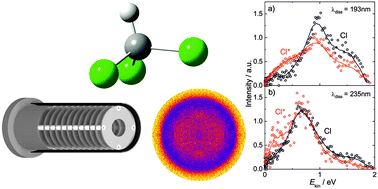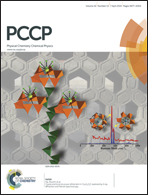Near-threshold photodissociation dynamics of CHCl3
Abstract
Energy- and angle-resolved photofragment distributions for ground-state Cl (2P3/2) and spin–orbit excited Cl* (2P1/2) have been recorded using the velocity map imaging technique after photodissociation of chloroform at wavelengths of 193 and ∼235 nm. Translational energy distributions are rather broad and peak between 0.6 and 1.0 eV. The spin–orbit branching ratios [Cl*]/[Cl] are 1 and 0.3 at 193 and 235 nm, respectively, indicating the involvement of two or more excited state surfaces. Considering the anisotropy parameters and branching ratios collectively, we conclude that the reaction at 193 nm takes place predominantly on the 1Q1 surface, while the 3Q1 surface gains importance at lower dissociation energies around 235 nm.


 Please wait while we load your content...
Please wait while we load your content...